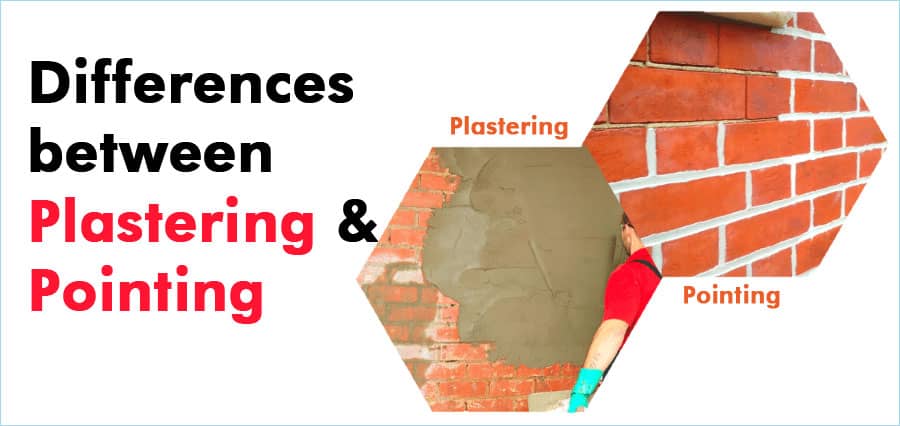Differences between Plastering and Pointing in Construction

Introduction
Construction work involves many techniques, each with its unique purpose. Two such techniques are plastering and pointing. While these methods may seem similar at first glance, they serve distinct purposes and are used in different situations. In this article, we will explore the Differences between Plastering and Pointing in Construction to help you understand their applications and make informed decisions for your construction projects.
What is Plastering in Construction?
Plastering is a technique used to create a smooth and even finish on walls and ceilings. It involves the application of a plaster mixture made of cement, sand, and water, to a surface using a trowel. The plaster mixture is then smoothed out and left to dry, creating a smooth and level surface suitable for painting or wallpapering.
What is Pointing in Construction?
Pointing is a technique used to strengthen and protect brickwork. It involves filling in the gaps between bricks using a mortar mixture, creating a sealed and stable structure. Pointing also adds an aesthetic element to brickwork by providing a neat and even finish.
Differences between Plastering and Pointing in Construction
a. Purpose
The main difference between plastering and pointing is their purpose. Plastering is used to create a smooth and even surface on walls and ceilings, while pointing is used to strengthen and protect brickwork.
b. Application
Plastering is applied to walls and ceilings, while pointing is applied to brickwork.
c. Material
Plastering requires a plaster mixture made of cement, sand, and water, while pointing requires a mortar mixture made of cement, sand, and lime.
d. Tools
Plastering requires a trowel, while pointing requires a pointing trowel.
When to Use Plastering in Construction?
Plastering is used when a smooth and even surface is required on walls and ceilings. This is often the case when preparing a surface for painting or wallpapering. Plastering is also used in the construction of false ceilings and decorative features.
When to Use Pointing in Construction?
Pointing is used when brickwork needs to be strengthened and protected. This is often the case with older buildings where the mortar may have deteriorated over time, or when constructing new brickwork that needs to be sealed and stabilized.
FAQs about Plastering and Pointing in Construction:
Can pointing be done on walls and ceilings?
No, pointing is specifically used for brickwork.
Can plastering be done on brickwork?
While plastering can technically be applied to brickwork, it is not recommended as it may not adhere properly.
How long does plastering and pointing take to dry?
Plastering and pointing can take anywhere from a few hours to several days to dry, depending on the thickness and type of mixture used.
Conclusion
In conclusion, plastering and pointing are two distinct techniques used in construction. While they may seem similar at first glance, they serve different purposes and are used in different situations. By understanding the Differences between Plastering and Pointing in Construction, you can
